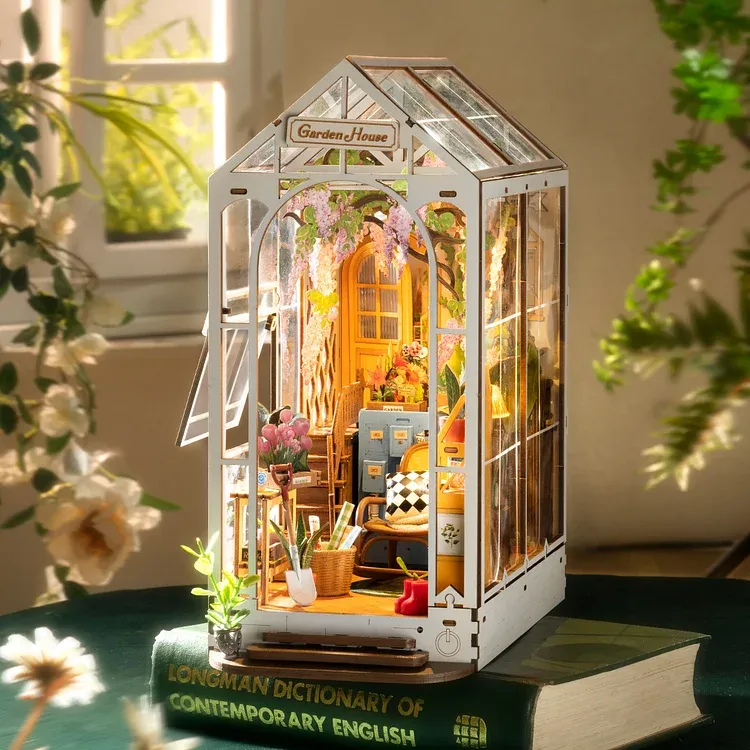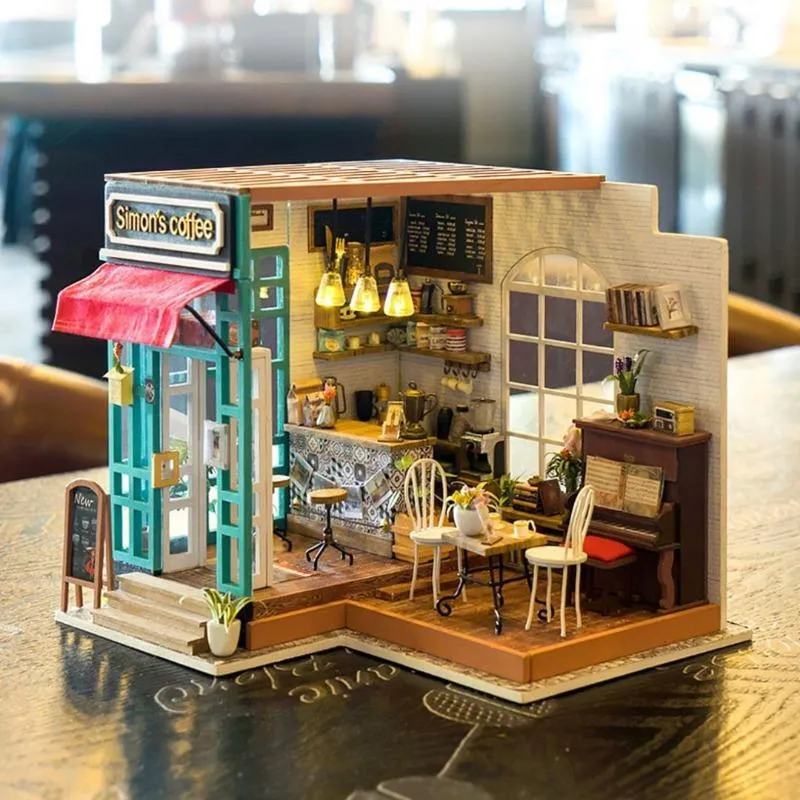Educators and parents are always looking for tools that can help improve students’ hands-on learning experience and cognitive abilities. This is where the uses of 3D wooden puzzles in education come to the forefront.
Studies from the University of Chicago found that kids who play with puzzles early on tend to develop better spatial skills, which are crucial for doing well in STEM subjects (NSF – National Science Foundation) (Board Games for Learning).
These activities also help improve cognitive skills like visual-spatial reasoning and memory, which are essential for math and understanding complex concepts (We Are Teachers). For more details on the educational benefits of puzzles, visit the National Science Foundation and the Toy Association’s Market Research.
Now, it’s time to explore the use of wooden puzzles in education and understand how they can enhance the learning experience for millions of students globally.
What are 3D Wooden Puzzles?
3D wooden puzzles are intricate puzzles made from wooden pieces that fit together to form a three-dimensional model. The pieces fit together like a jigsaw puzzle to create an elaborate structure. These puzzles often feature detailed designs of vehicles, animals, buildings, geometrical shapes, and the like.
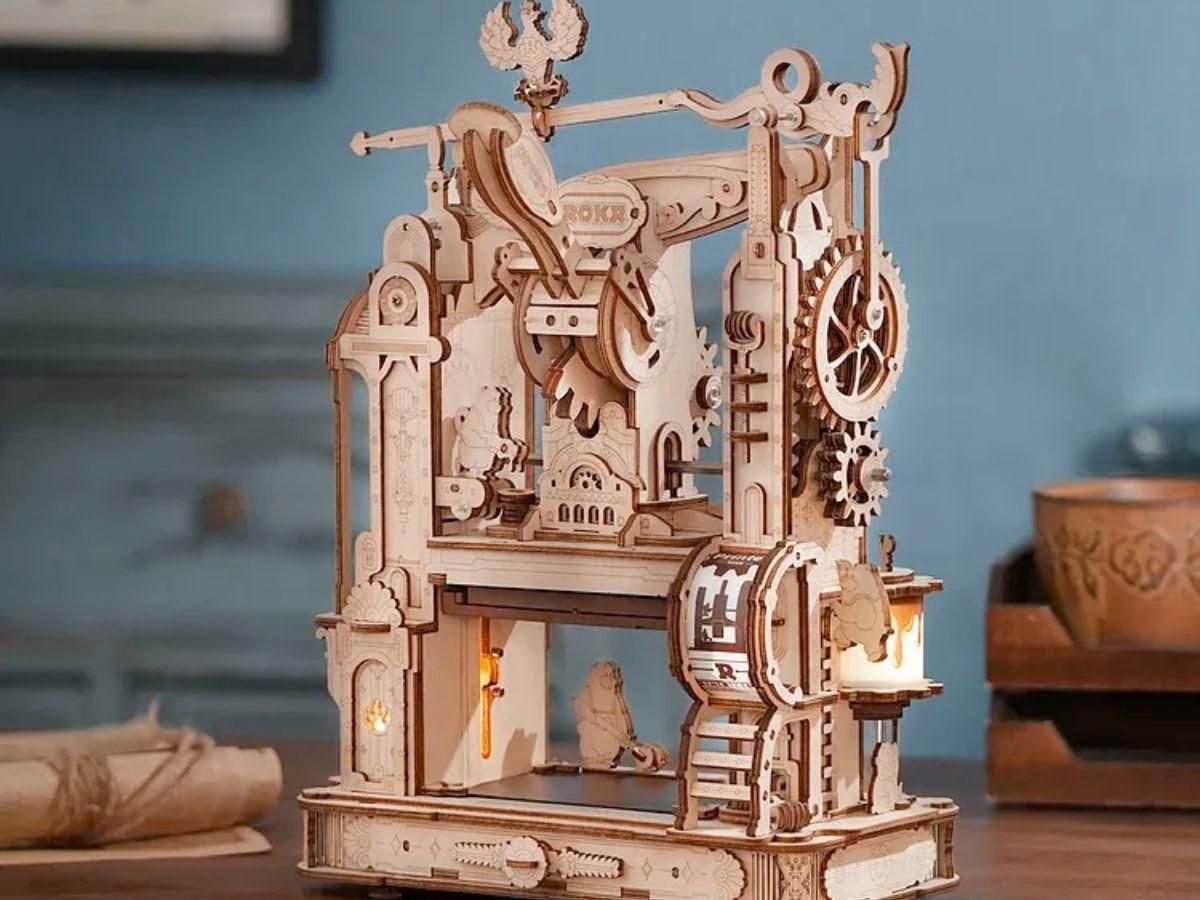
What Makes 3D Wooden Puzzles Superior to Other Options?
Parents and educators always want to acquire the highest quality puzzles that can withstand regular wear and tear and last a long time. There is a lot of discussion around which material is best for 3D puzzles. Upon taking a deeper look, it becomes clear that 3D wooden puzzles are the superior choice for the following reasons:
- More environmentally sustainable.
- Don’t lose their texture or color.
- Quality brands use high-quality wood to make puzzles last a long time.
- Structures made from 3D wooden puzzles are more rigid.
- Usually handcrafted by professional artisans, giving them a more refined look.
Educational Benefits of 3D Wooden Puzzles
Let’s discover the various uses of 3D wooden puzzles in education.
1. Developing Fine-Motor Skills and Hand-Eye Coordination

Fine motor skills are all about the movement and coordination of smaller muscles in our hands and fingers. They play a critical part in accomplishing several basic tasks, such as buttoning clothes, eating, and grasping small objects. They are also responsible for intricate tasks such as writing, drawing, using various tools, and similar activities.
According to researchers, puzzles are excellent for developing fine motor skills because they encourage children to fit small wooden pieces in the right spaces. It improves their hand-eye coordination and dexterity, which are integral elements of motor skills.
3D wooden puzzles also improve the visual-spatial awareness of learners, which is the ability to modify spatial relationships between objects and their surroundings. When students construct complex 3D shapes by manipulating puzzle pieces, they get an intuitive understanding of concepts like proportion, orientation and symmetry. This understanding then translates to real-world application where people apply it to navigate spaces, understand distances, and spatial relationships between objects.
2. 3D Puzzles for Critical Thinking, Problem Solving, and Perseverance
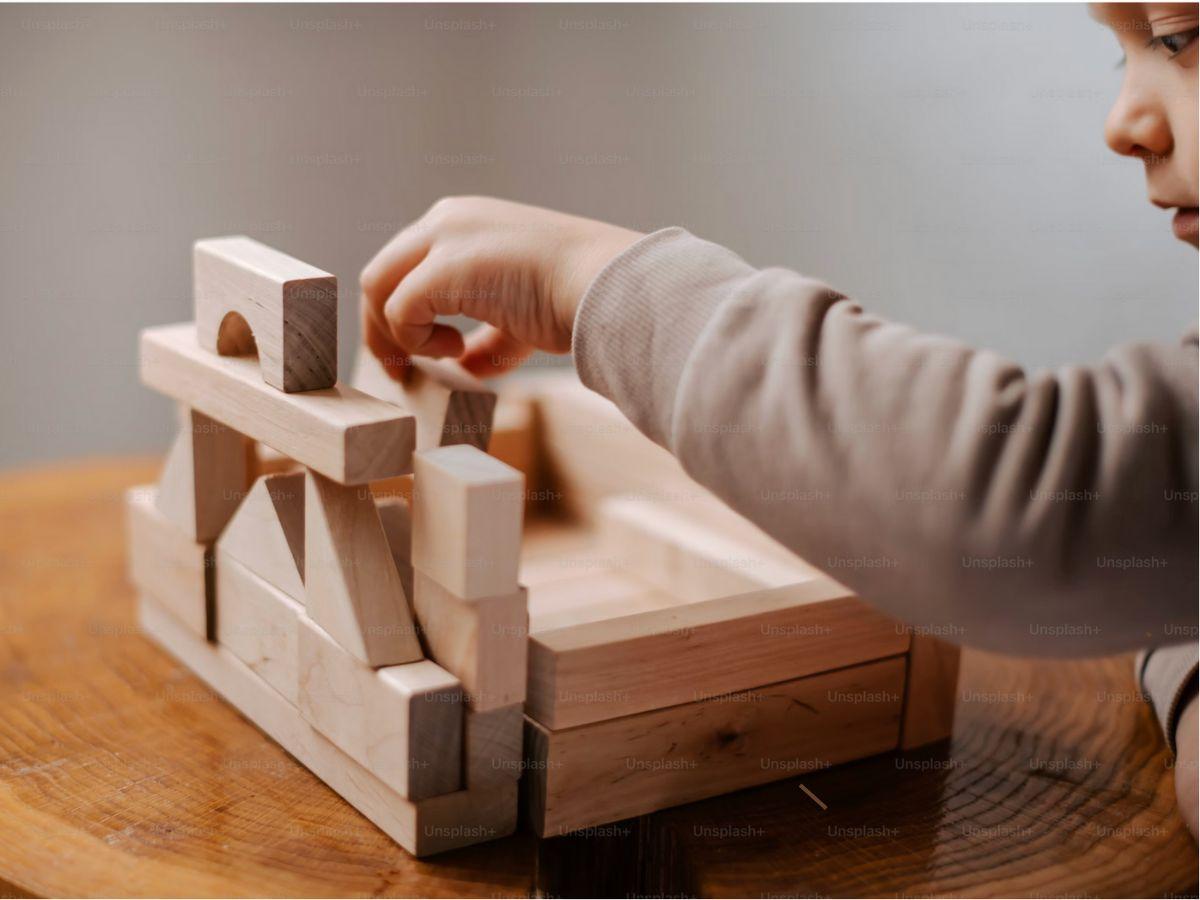
Perseverance is a critical trait of any problem solver because problems can become very time-consuming and complex. Unless you are willing to dedicate time and effort to solving problems, you cannot excel as a student or problem solver. One of the uses of 3D wooden puzzles in education is developing problem-solving skills in students through grit.
Whenever a student attempts to complete a jigsaw puzzle, it takes time, especially with complex puzzles. As they face challenges, they learn the value of persistence in pushing boundaries and moving forward. When students are given a puzzle to solve, they instinctively resort to trial and error, which is a crucial part of learning any skill.
It is not just about putting a few pieces in the right places. 3D puzzles can foster problem-solving skills in students, boosting their sense of achievement and confidence. This experience demonstrates that perseverance and effort can lead to positive outcomes in the end.
3. 3D Puzzles for STEM Education
The uses of 3D wooden puzzles in education are further strengthened by their ability to promote Science, Technology, Engineering, and Mathematics (STEM) education. Students who engage in solving complex puzzles develop a better understanding of engineering concepts, architectural nuances, and mathematical/geometrical relationships.
1. Mathematics
Many students at various levels consider mathematics an abstract and tough undertaking, but puzzles can bring those distant concepts to life, making it easier for students to grasp them intuitively. They no longer need to memorize formulas and use them on a given question without truly understanding the underlying concepts.
2. Science
Many wooden 3D puzzles are designed after scientific models. They can show different planets of the solar system, atoms or molecules in compounds, and much more. Those interested in mechanics can learn its principles by assembling puzzles with gears, levers, and the like. Students also learn about stability as they try to build things that are structurally robust.
4. Sensory and Emotional Benefits
Younger students and kids can benefit immensely from building 3D puzzles in education. They have several shapes, sizes, and colors, that help children refine their senses and use them in unique ways. Touching the wooden texture, seeing bold colors, and hearing one piece fit in another can be stimulating and satisfying for the senses.
When kids achieve 3D wooden puzzle solutions, they get a sense of achievement that instantly boosts their confidence. It pushes them toward more complex tasks and makes them feel they can accomplish more. Solving these puzzles helps build emotional resilience, which is critical to childhood development.
5. Developing Social Skills
Solving puzzles can also help develop social skills, especially when students play together. The cooperation between them to complete a puzzle teaches them how to communicate effectively and work in a team. As the team works on solving the puzzle, each team member provides their input, listens to others, and discusses which pieces to place next.
As they solve puzzles with teamwork, each student understands that working together is key to solving complex problems.
Tips on Selecting Age-Appropriate Puzzles
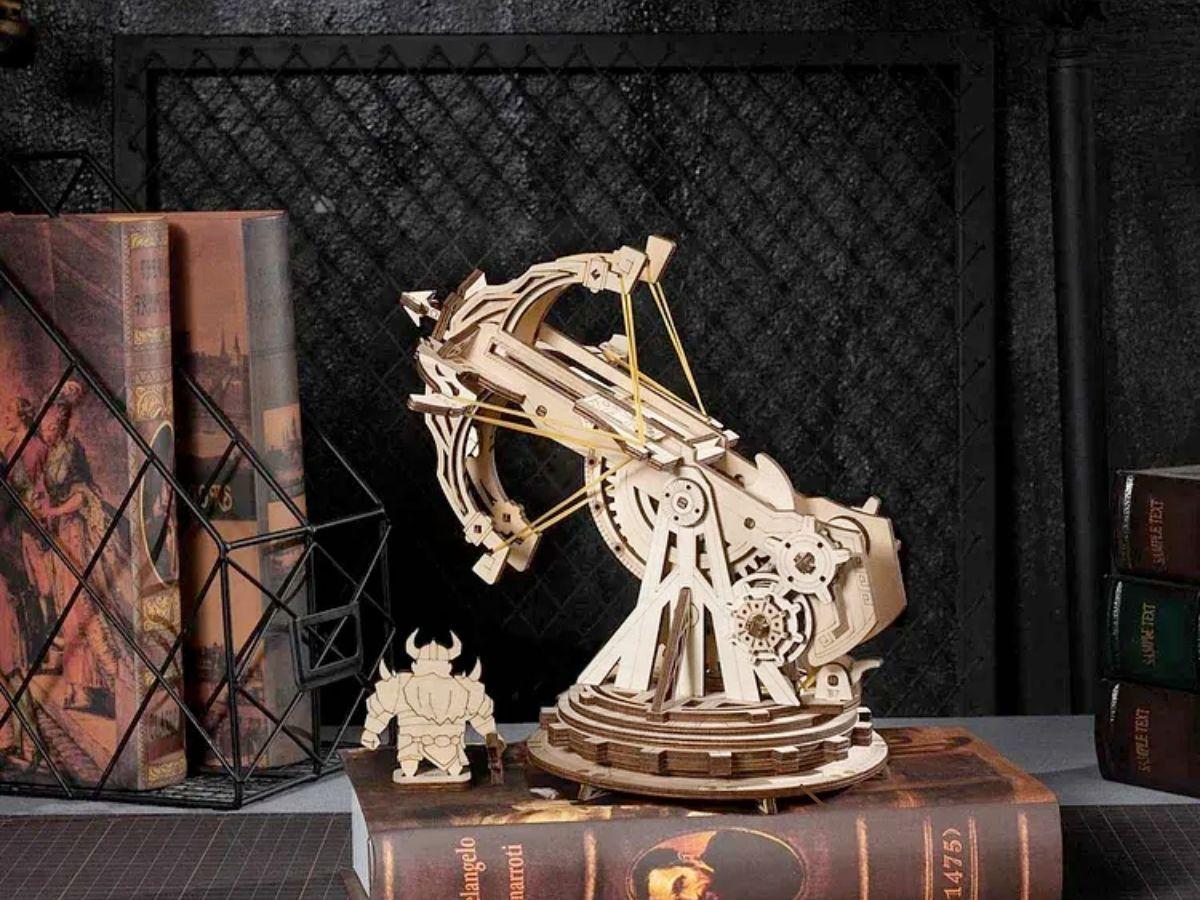
When you want to purchase a 3D wooden puzzle for children, consider their current age, developmental stage, and interests. Here are some of the best tips to help you select the most age-appropriate wooden puzzles.
1. Toddlers (1-3 years old)
Toddlers learn best with wooden puzzles that are large, colorful, and have few pieces. Since these pieces are larger than usual, toddlers can manipulate them easily. Puzzle pieces with contrasting colors are ideal, as they make this activity even more fun for toddlers. Parents must ensure they select puzzles with no small pieces that could be swallowed by a toddler.
2. Pre-schoolers (3-5 years old)
Once a child is older than three, it is time to introduce more complex wooden puzzles by increasing the number of smaller pieces. The ideal number of pieces for these puzzles is 10-25, and they can have themes like vehicles, alphabets, animals, and more.
3. School-going children (5+ years old)
When children start going to school, they are ready to handle even more complex puzzles with 24-50 or even more pieces. These puzzles can be based on maps, nature, buildings, and similar themes. Puzzles at this age should focus on more concrete educational topics that have some connection with the child’s curriculum to aid their studies.
Ideas to Make Puzzle Solving Fun and Engaging for Students
Following are some ideas to make 3D wooden puzzles more engaging for students and children of all ages.
1. Introduce Gamification
Gamification can turn the usual puzzle-solving session into an adventure and boost the interest and motivation of students. Here are a few ways one can enhance the uses of 3D wooden puzzles in education through gamification:
- Creating a series of puzzle challenges with increasing difficulty.
- Adding time trials to make students work more efficiently and strategically.
2. Storytelling Through Puzzles
Stories always fascinate people, and you can use this principle to make wooden puzzles more engaging.
One approach is to create a story around the available puzzles where each completed puzzle or a part of the puzzle unlocks a new chapter. For instance, a pirate ship puzzle can be a part of an elaborate treasure hunt storyline. As students complete the first puzzle, they discover a map or a hidden code that takes them to the next puzzle and the adventure continues.
Another strategy is to let students weave a storyline around the puzzle itself. For instance, when they complete a puzzle, you can ask them to craft a story around it telling what could be happening in that situation.
Asking students to create these stories improves their verbal skills and makes them more creative.
3. Incorporate Learning Goals
Aligning puzzle-solving with educational goals can enhance the learning experience for students. Younger students can be exposed to ideas of numbers and colors, while older students can learn the concepts of science through puzzles. For instance, a puzzle based on solar systems can help students learn about various planets, their moons, the sun, and how they work in harmony.
4. Offer Rewards
Creating a reward system for puzzle completion can incentivize students to try harder and solve more complex puzzles. The reward can be something as simple as a sticker. As students solve more puzzles and collect a certain number of stickers, they can get a special reward like a visit to the zoo or a treat.
Transform Educational Experiences With 3D Wooden Puzzles
This guide has explained the educational value and uses of 3D wooden puzzles in education. They are excellent for enhancing motor skills, hand-eye coordination, sensory responses, and perseverance. No matter what the educational level of the student, 3D puzzles are an excellent way to blend education with curiosity and entertainment.
Instead of the 2D images in the books, students now get a 3D hands-on experience that feels much more realistic and helps them understand concepts deeply. Ultimately, it improves their understanding of the subject. So, get some cool 3D puzzles today and make learning more fun and engaging than ever.





